Sep 6, 2015 | coins, commentary, legislative, policy
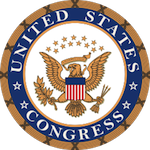 Usually, I open the month with a report on the coin-related legislation from last month. In August, congress went on their summer vacation and did not work on any legislation. There are many who think that given the way congress has done little to nothing over the last few years, this may have been a good thing. When congress returns after Labor Day, there is work on their schedules. While I expect the same level of non-work as before their vacation, there are the issues that have a high probability of being worked on.
Usually, I open the month with a report on the coin-related legislation from last month. In August, congress went on their summer vacation and did not work on any legislation. There are many who think that given the way congress has done little to nothing over the last few years, this may have been a good thing. When congress returns after Labor Day, there is work on their schedules. While I expect the same level of non-work as before their vacation, there are the issues that have a high probability of being worked on.
H.R. 2722: Breast Cancer Awareness Commemorative Coin Act
Sponsor: Rep. Carolyn Maloney (D-NY)
• Introduced: June 10, 2015
• Passed the House: July 15, 2015
• Received by the Senate: July 16, 2015
• Referred to the Senate Banking, Housing, and Urban Affairs Committee
• Summary:
- 2018 Commemorative program
- 50,000 $5 gold coins with $35 surcharge
- 400,000 silver $1 coins with $10 surcharge
- 750,000 clad half-dollars with $5 surcharge
- Surcharge paid to Breast Cancer Research Foundation for the purpose of furthering breast cancer research
Track this bill at https://www.govtrack.us/congress/bills/114/hr2722
Aside that this would be a swan-song for an a long-serving representative that is retiring, even after the argument about who should receive the money the concept is popular in congress. It is likely to pass the Senate either as a formality or under a suspension of the rules with only a voice vote taken. If there are any votes against this bill, it will be from the senators who have said that they are against using commemorative coins as a fundraising mechanism (see H.R. 3097).
H.R. 1698: Bullion and Collectible Coin Production Efficiency and Cost Savings Act
Sponsor: Rep. Bill Huizenga (R-MI)
• Introduced: March 26, 2015
• Passed the House of Representatives on June 23, 2015 by voice vote
• Received in the Senate on June 24, 2015 and referred to the Committee on Banking, Housing, and Urban Affairs
Track this bill at https://www.govtrack.us/congress/bills/114/hr1698
Back in February, I wrote that congress was being lazy and that as members and their staffs were writing commemorative coin acts, they were copying from old legislation. While this makes it easy for them to deal with, the U.S. Mint has asked that this be changed to save money. Time and again, congress has been told that the U.S. Mint could save money if they standardized gold coins to 24-karat coins and silver to at least .999 fine quality. Aside from making the coins more attractive to more buyers including investors, the U.S. Mint does not have to pay more for someone to “dirty” the metals to create planchets that contain 90-percent of the metals.
This bill should be easy for congress to deal with. It does not spend any taxpayer money and has the ability to add money to the General Treasury. Since H.R. 1698 has passed the House under suspension of the rule (voice vote), it should not have problems in the Senate.
An issue that is likely to be raised that has been a part of a lot of bills is the elimination of the paper $1 note. This came up again when Sen. John McCain (R-AZ) was unequivocal about seeing the $1 note retired in favor of a coin. McCain has supported this type of legislation in the past but his going out of the way to emphasize this as an issue makes it interesting. As one of the oldest members of congress, his opinion is a minority of those of his generation. Surveys have shown there is a clear generational divide as to who supports this measure. When, the Baby Boomers (those born before 1964) and those older are overwhelmingly not in favor of eliminating the the paper note. The GenXers, those born 1965-1980, are almost evenly divided while the Millenials, those born since 1980, do not care because they are mostly tied to their credit and debit cards.
For the longest time, the Massachusetts delegation have held these types of bills back. This is because the Dalton, Massachusetts based Crane & Co., the maker of currency paper, has been the exclusive currency paper supplier to the Bureau of Engraving and Printing since 1879. Although Elizabeth Warren (D-MA) has become a more powerful figure in the Senate, she does not have the gravitas of a previous holder of that seat, the late Sen. Ted Kennedy (D). Additionally, with John Kerry now the Secretary of State and other changes in the House, like the retiring of Barney Frank (D-MA), the Massachusetts delegation does not have the same power as it once had. The only power the Senators have would be to filibuster any measure that would eliminate the $1 note. Whether they will do this remains to be seen.
Aug 5, 2015 | coins, commemorative, gold, legislative, news, platinum, policy, US Mint
 The term Dog Days goes back to ancient Roman times when calendars were measured by the stars. While trying to measure time, the hottest part of the summer would coincide with the brightest star, Sirius, being dominant in the sky. Sirius is part of the constellation Canis Major (big dog).
The term Dog Days goes back to ancient Roman times when calendars were measured by the stars. While trying to measure time, the hottest part of the summer would coincide with the brightest star, Sirius, being dominant in the sky. Sirius is part of the constellation Canis Major (big dog).
During the period from about 20 days prior to the height of Sirius to 20 days following, Canis Major would only appear with the sunrise and sunset. Because ancient Romans thought Sirius contributed to the heat and humidity, this period would be called the Dog Days.
Today’s society has attached many meanings to the Dog Days of Summer. In baseball, it is the jockeying for position to get ready for the pennant races. Football begins training camps, politicians warm up to run for office (sometimes a year early), and the temperatures are rising with the east getting too wet and the west not getting wet enough.
These contrasts illustrate a congress that sometimes looks like they are really trying to do something and then really trying to put the “fun” in dysfunctional!
In July, it looks like congress really tried to do some work. Here are the coin-related legislative actions from our from our representatives on Capitol Hill:
It’s the law!
H.R. 893: Boys Town Centennial Commemorative Coin Act
Sponsor: Rep. Jeff Fortenberry (R-NE)
• Introduced: February 11, 2015
• Signed by the President: July 6, 2015
• Public Law 114-30
• Summary:
- 2017 Commemorative program
- 50,000 $5 gold coins with $35 surcharge
- 350,000 silver $1 coins with $10 surcharge
- 300,000 clad half-dollars with $5 surcharge
- Surcharge paid to Boys Town
Read the details of this law at https://www.govtrack.us/congress/bills/114/hr893
Passed the House
H.R. 2722: Breast Cancer Awareness Commemorative Coin Act
Sponsor: Rep. Carolyn Maloney (D-NY)
• Introduced: June 10, 2015
• Passed the House: July 15, 2015
• Received by the Senate: July 16, 2015
• Referred to the Senate Banking, Housing, and Urban Affairs Committee
• Summary:
- 2018 Commemorative program
- 50,000 $5 gold coins with $35 surcharge
- 400,000 silver $1 coins with $10 surcharge
- 750,000 clad half-dollars with $5 surcharge
- Surcharge paid to Breast Cancer Research Foundation for the purpose of furthering breast cancer research
Track this bill at https://www.govtrack.us/congress/bills/114/hr2722
Commemorative Coin Legislation Introduced
H.R. 2980: Mayflower Commemorative Coin Act
Sponsor: Rep. Bill Foster (D-IL)
• Introduced: July 8, 2015
• Referred to the House Committee on Financial Services
• Summary:
- 2020 Commemorative program
- 50,000 $5 gold coins with $35 surcharge
- 100,000 silver $1 coins with $10 surcharge
- Surcharge paid to General Society of Mayflower Descendants for educational purposes.
Track this bill at https://www.govtrack.us/congress/bills/114/hr2980
S. 1715: Mayflower Commemorative Coin Act
Sponsor: Sen. John Hoeven (R-ND)
• Introduced: July 8, 2015
• Referred to the Senate Banking, Housing, and Urban Affairs Committee
• Summary: see H.R. 2980, above
Track this bill at https://www.govtrack.us/congress/bills/114/s1715
H.R. 2978: Thirteenth Amendment Commemorative Coin Act
Sponsor: Rep. Danny Davis (D-IL)
• Introduced: Jul 8, 2015
• Referred to the House Committee on Financial Services
• Summary:
- 2015 Commemorative program
- 250,000 $50 bi-metallic (gold & platinum) with $10 surcharge
- 250,000 $20 gold coins with $10 surcharge
- 500,000 silver $1 coins with $10 surcharge
- Surcharge paid to Smithsonian National Museum of African American History and Culture.
Track this bill at https://www.govtrack.us/congress/bills/114/hr2978
Other coin-related legislation
H.R. 3097: Commemorative Coins Reform Act of 2015
Sponsor: Rep. Justin Amash (R-MI)
• Introduced: Jul 16, 2015
• Referred to the House Committee on Financial Services
• Summary: If passed, this bill will prohibit payment of surcharges from commemorative coins to organizations outside of the federal government.
Track this bill at https://www.govtrack.us/congress/bills/114/hr3097
H.R. 3300: To reduce waste and implement cost savings and revenue enhancement for the Federal Government.
Sponsor: Rep. Robert Pittenger (R-NC)
• Introduced: Jul 29, 2015
• Referred to many committees including the House Committee on Financial Services
Track this bill at https://www.govtrack.us/congress/bills/114/hr3300
Jul 1, 2015 | coins, commemorative, commentary, legislative, policy
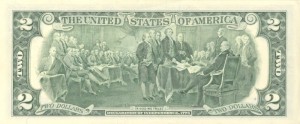
Reverse of the $2 Federal Reserve Note features an engraved modified reproduction of the painting The Declaration of Independence by John Trumbull.
On June 11, rather than let Jefferson continue his draft, the Continental Congress elected the Committee of Five to write the full document. John Adams, whose role in the Continental Congress would be that of the Majority Leader today, was a member of the Committee of Five but insisted that most of the writing be done by Jefferson. The other members of the Committee of Five were Ben Franklin, Roger Sherman, and Robert Livingston.
The committee presented the document to the Continental Congress on June 25. For the next seven days, the document went through the first ever mark-up session where members applied their edits to the document. Debate began on July 1 and by July 2 everyone who wanted to speak has their say before the vote. With each delegation allowed one vote, the final tally was 9 in favor of independence, 2 against (Pennsylvania and South Carolina), and one abstention (New York, their delegation did not have their legislature’s authority to cast a vote).
But if you thought that this was the end of the debate, you failed to remember that this was the beginnings of congress! The vote was conditional on Jefferson revising the document before it was adopted. The rewrite was completed and presented the final copy to the Continental Congress on July 4, 1776 where it passed with the same vote. Adams felt that July 2 should be considered Independence Day. A combination of the day that the text was adopted and what we would consider in today’s environment to be a clerical error, the Declaration of Independence was signed (on August 2, 1776) saying that independence was declared on July 4, 1776.
The moral of this story is that no matter how ridiculous the bill or idea, it is not law until the final version of the bill is approved and signed.
Congress had a busy June with regard to coin-related legislation. The bills that saw action were as follows:
H.R. 2722: Breast Cancer Awareness Commemorative Coin Act
Sponsor: Rep. Carolyn Maloney (D-NY)
• Introduced: June 10, 2015
• Referred to the House Committees on Financial Services and Budget
Track this bill at https://www.govtrack.us/congress/bills/114/hr2722
H.R. 2726: Apollo 11 50th Anniversary Commemorative Coin Act
Sponsor: Rep. Bill Posey (R-FL)
• Introduced: June 10, 2015
• Referred to the House Committee on Financial Services
Track this bill at https://www.govtrack.us/congress/bills/114/hr2726
H.R. 1698: Bullion and Collectible Coin Production Efficiency and Cost Savings Act
Sponsor: Rep. Bill Huizenga (R-MI)
• Introduced: March 26, 2015
• Passed the House of Representatives on June 23, 2015 by voice vote
• Received in the Senate on June 24, 2015 and referred to the Committee on Banking, Housing, and Urban Affairs
Track this bill at https://www.govtrack.us/congress/bills/114/hr1698
H.R. 893: Boys Town Centennial Commemorative Coin Act
Sponsor: Rep. Jeff Fortenberry (R-NE)
• Introduced: February 11, 2015
• Passed the House of Representatives on June 23, 2015 by voice vote
• Passed the Senate on June 25, 2015 by unanimous consent
• Presented to the President on June 26, 2015
Track this bill at https://www.govtrack.us/congress/bills/114/hr893
H.R. 2906: To require the Secretary of the Treasury to mint coins in recognition of the 50th anniversary of the Texas Western College National Collegiate Athletic Association men’s basketball championship.
Sponsor: Rep. Beto O’Rourke (D-TX)
• Introduced: June 25, 2015
• Referred to the House Committee on Financial Services
Track this bill at https://www.govtrack.us/congress/bills/114/hr2906
May 6, 2015 | BEP, coins, commemorative, currency, Federal Reserve, legislative, policy, US Mint
For those of us who are political junkies, April was a relatively quiet month. At least there was something to watch that was more related to the hobby than the usual partisan bickering. Here are the coin and currency-related legislation moving through congress:
S. 925: Women on the Twenty Act
Sponsor: Sen Jeanne Shaheen (D-NH)
• A bill to require the Secretary of the Treasury to convene a panel of citizens to make a recommendation to the Secretary regarding the likeness of a woman on the twenty dollar bill.
• Introduced: April 14, 2015
• Referred to the Senate Banking, Housing, and Urban Affairs Committee
Track this bill at https://www.govtrack.us/congress/bills/114/s925
S. 95: A bill to terminate the $1 presidential coin program
Sponsor: Sen. David Vitter (R-LA)
• Introduced: January 7, 2015
• Discharged from Senate Committee on Homeland Security and Governmental Affairs by Unanimous Consent on April 14, 2015
• Referred to the Senate Committee on Banking, Housing, and Urban Affairs on April 14, 2015
Track this bill at https://www.govtrack.us/congress/bills/114/s95
S. 985: United States Coast Guard Commemorative Coin Act
Sponsor: Sen. Christopher Murphy (D-CT)
• To require the Secretary of the Treasury to mint coins in commemoration of the United States Coast Guard.
• Introduced: April 16, 2015
• Referred to the Senate Banking, Housing, and Urban Affairs Committee
Track this bill at https://www.govtrack.us/congress/bills/114/s985
Apr 26, 2015 | coins, currency, legislative, policy
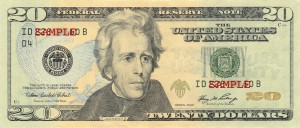 A few weeks after the Women on 20s group began their campaign, they gained the attention of congress to have two bills submitted to require the change be made.
A few weeks after the Women on 20s group began their campaign, they gained the attention of congress to have two bills submitted to require the change be made.
First up is Sen. Jeanne Shaheen (D-NH) who introduced Women on the Twenty Act (S. 925) on April 14, 2015 and referred to the Committee on Banking, Housing, and Urban Affairs, the bill is eight co-sponsor. All eight co-sponsors are Democrats and six are women.
Simply, the bill seeks to add a new paragraph to the Federal Reserve Act (12 U.S.C. § 418) to say:
The Secretary of the Treasury shall convene a panel of private citizens of the United States to advise and make recommendations to the Secretary regarding the likeness of a woman to appear on the face of $20 Federal reserve notes. In carrying out the requirements of the preceding sentence, each of the Secretary and the panel shall consider and weigh input provided by the American people.
While you read that paragraph, you have to understand that there is a little Washington-speak in the proposed law. All it says is that the Secretary is required to appoint a panel of private citizens, not government employees or appointees, to make a recommendation. It does not say that the Secretary is required take the committee’s recommendation nor does it it say that the Secretary is to do anything with the recommendation.
Essentially, unless the wording is changed, there is nothing in the above statement to require a woman appear on the $20 Federal Reserve Note. “Thank you for your recommendation,” a Secretary of the Treasury can say, “and have a nice day.”
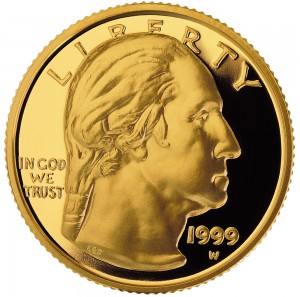
1999-W George Washington Commemorative using the design by Laura Gardin Frazer
Adding to the fray is a bill introduced by Louis Gutierrez (D-IL) whose title currently appears similar to that of Sen. Shaheen’s bill. Gutierrez’s bill (H.R. 1910) has no co-sponsors and was assigned to the House Financial Services Committee. As this is being written, the bill has not been published by the Government Printing Office making it difficult to compare this with S. 925.
Considering my last post about this topic, it will be interesting to see how this turns out. If I was to guess, one of the bills will be passed at the end of a session either by unanimous consent or an overwhelming vote in favor. A design will be produced but not in time to celebrate the 100th anniversary of suffrage. The wheels of politics and bureaucracy moves too slow and the engravers need time to engrave the plates.
Currency image courtesy of Wikimedia Commons.
Coin image courtesy of the U.S. Mint.
Apr 3, 2015 | coins, commemorative, gold, legislative, silver
 March saw the sales tax come under attack as states are looking to the federal government to lift the restrictions on collecting taxes on interstate sales. The senate re-introduced the Marketplace Fairness Act with lifts the restrictions on all interstate sales, not just those made via the Internet.
March saw the sales tax come under attack as states are looking to the federal government to lift the restrictions on collecting taxes on interstate sales. The senate re-introduced the Marketplace Fairness Act with lifts the restrictions on all interstate sales, not just those made via the Internet.
In March, the Supreme Court ruled that a challenge to Colorado’s so-called “Amazon tax” can proceed in federal court, Justice Anthony Kennedy suggested that that the court should re-examine the physical presence rules. As part of the court’s opinion on the Colorado case, Kennedy wrote that the ruling “now harms states to a degree far greater than could have been anticipated earlier.”
Remember, the overwhelming majority of coin dealers are small businesses. All of these attempts by the states to squeeze every last cent out of you will put a heavy burden on small businesses. If it costs too much for small businesses to manage these sales tax rules it could impact coin shows all over the country.
This one is going to get dicy. stay tuned!
In February, there was only one bill that saw any action:
S. 301: Boys Town Centennial Commemorative Coin Act
Sponsor: Sen. Deb Fischer (R-NE)
• To require the Secretary of the Treasury to mint coins in commemoration of the centennial of Boys Town
• Passed Senate without amendment by Unanimous Consent on March 24, 2015
• Sent to the House of Representatives for consideration (held at the desk) on March 24, 2014
Track this bill at https://www.govtrack.us/congress/bills/114/s301
The following two bills were introduced right before congress adjourned for their spring break and have not been published. While the Coast Guard commemorative is pretty self explanatory, H.R. 1698 is intriguing.
H.R. 1683: To require the Secretary of the Treasury to mint coins in commemoration of the United States Coast Guard
Sponsor: Rep. Joe Courtney (D-CT)
• Introduced on March 26, 2016 (106 co-sponsors)
• Referred to the House Committee on Financial Services
Track this bill at https://www.govtrack.us/congress/bills/114/hr1683
H.R. 1698: To amend design and content requirements for certain gold and silver coins
Sponsor: Rep. Bill Huizenga (R-MI)
• Introduced on March 26, 2016
• Referred to the House Committee on Financial Services
Track this bill at https://www.govtrack.us/congress/bills/114/hr1698
Mar 4, 2015 | coins, commemorative, legislative
 March comes in like a lion in many ways, especially in Washington, D.C. Between the weather, fighting over the budget, or an invitation of a world leader, there has been no shortage of roaring emanating from either end of Pennsylvania Avenue.
March comes in like a lion in many ways, especially in Washington, D.C. Between the weather, fighting over the budget, or an invitation of a world leader, there has been no shortage of roaring emanating from either end of Pennsylvania Avenue.
In the mean time, there was only one bill introduced in February:
H.R. 893: Boys Town Centennial Commemorative Coin Act
Sponsor: Rep. Jeff Fortenberry (R-NE)
• Introduced in the House on February 11, 2015
• Referred to the House Committee on Financial Services
Track this bill at https://www.govtrack.us/congress/bills/114/hr893
Feb 7, 2015 | coins, commentary, dollar, legislative, US Mint
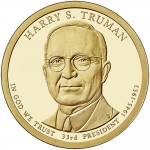
“Give ’em hell Harry!”
Case-in-point, Sen. David Vitter (R-LA) introduced S. 95, a bill “[To] Terminate the $1 presidential coin program.” Like the knee jerking to copy and paste old bills, Vitter dusted off his previous attempt (S. 94 in the 113th Congress and S. 1385 in the 112th Congress) and dropped it in the hopper more in an attempt to make it look like he is doing something when all he is doing is annoying collectors.
By anyone’s measure, the Presidential $1 Coin program has not been a success. While it was fundamentally a great idea, the problem with having it gain wider circulation is that congress did not pass the appropriate laws to discontinue printing and distribution of the one dollar Federal Reserve note. When given a choice, people have chosen to carry the note rather than the coin.
In 2011, National Public Radio published a story complete with errors that caused a public outcry. But one aspect of the story was true: because the presidential dollar did not circulate, they were accumulating in the coin storage rooms at the Federal Reserve. When the story went vial, members of congress from both sides of the aisle seemed to fall all over themselves to appear like they were doing something and introduced go-nowhere bills to end the program.
Acting as the only adult in the room, then Secretary of the Treasury Tim Geithner, ordered that the production of all dollar coins, including the Native American dollar, be reduced to levels to only satisfy the collector market unless the Federal Reserve ordered more coins.
Four years later, the U.S. Mint is in the second-to-last year of the program. In 2015, the U.S. Mint is scheduled to release coins honoring Presidents Harry S. Truman, Dwight D. Eisenhower, John F. Kennedy, and Lyndon B. Johnson. In fact, the Kennedy dollar and First Spouse gold coin featuring Jacqueline Kennedy are anticipate being so popular, the U.S. Mint will produce more of those coins including additional of the accompanying Jacqueline Kennedy medals.
At this point, the Presidential Dollar, First Spouse gold coins, and the First Spouse medals are a collector’s series that is near its end. In 2016, the U.S. Mint is scheduled to issue coins in honor of Presidents Richard M. Nixon and Gerald R. Ford. By law, because President Jimmy Carter is still living, he is not allowed to appear on a coin. Even though President Ronald Reagan is deceased, the coins have to be in order making the program end with Ford.
With six coins to go in the series and four years after the fury, why is Vitter introducing this bill now? Costs have been contained with the reduction of circulation. In fact, reviewing the annual reports, the Presidential $1 program has increased in sales as more of the better known 20th Century presidents have been featured.
Rather than leave well enough alone, Vitter joins the others in congress of not thinking and dropping a bill into the hopper that he might think has value to a small percentage of a perceived base but fails to look at the bigger picture. This is part of their collective myopia that keeps congress’s approval ratings in the single digits.
If Vitter did this for show, he has wasted the time of his staff for having to prepare the bill for submitting; he wasted the time and resources of the Senate clerk for having to record the bill; and he wasted the resources that will have to go into the various mechanisms for tracking the bill. Anytime a member of congress wastes resources they are wasting money.
As a federal government employee, Vitter, his staff, and the congressional support services are paid for out of your taxpayer dollars while the U.S. Mint is making more profit by maintain this program than it would otherwise. If members of congress would look beyond any ideology they pretend to profess and engage their brains when they do something like this, then maybe they might find their approval ratings at least higher than the current temperature in Washington, D.C.
Truman dollar image courtesy of the U.S. Mint.
Feb 2, 2015 | coins, legislative, policy, US Mint
 The 114th Congress was gaveled into session on January 5, 2015 with an air of optimism that both ends of Pennsylvania Avenue would be able to work together. Optimism can last as long as someone does not offend their opponent or there are significant lingering issues. Let the games begin.
The 114th Congress was gaveled into session on January 5, 2015 with an air of optimism that both ends of Pennsylvania Avenue would be able to work together. Optimism can last as long as someone does not offend their opponent or there are significant lingering issues. Let the games begin.
We open February with the New England Patriots winning the Super Bowl. Two weeks after the controversy over the deflation of the Patriots’ game balls, they came from behind and won the game on a last minute goal line interception. While many of the commercials were less than memorable, the game lived up to the super name. But for congress, it is only the first minutes of the game. With 23 months to go in the 114th Congress, the insanity is just beginning.
Here are the numismatic-related bills introduced in January:
S. 95: A bill to terminate the $1 presidential coin program
Sponsor: Sen. David Vitter (R-LA)
• Introduced in the Senate on January 7, 2015
• Referred to the Senate Homeland Security and Governmental Affairs Committee
Track this bill at https://www.govtrack.us/congress/bills/114/s95
H.R. 358: National Purple Heart Hall of Honor Commemorative Coin Act
Sponsor: Rep. Sean Maloney (D-NY)
• To require the Secretary of the Treasury to mint coins in commemoration of the National Purple Heart Hall of Honor.
• Proceeds paid to National Purple Heart Hall of Honor, Inc.
• Introduced in the House of Representatives on January 14, 2015
• Referred to the House Financial Services Committee
Track this bill at https://www.govtrack.us/congress/bills/114/hr358
H.R. 516: Cents and Sensibility Act
Sponsor: Rep. Steve Stivers (R-OH)
• To amend title 31, United States Code, to save the American taxpayers money by immediately altering the metallic composition of the one-cent, five-cent, dime, and quarter dollar coins
• Introduced in the House of Representatives on January 22, 2015
• Referred to the House Financial Services Committee
Track this bill at https://www.govtrack.us/congress/bills/114/hr516
In the days to come I will have a commentary on these bills. All three have flaws that congress keeps ignoring and it is time to take action to let them know how they can get things very wrong even on something as simple as coins. Stay tuned!
Jan 7, 2015 | BEP, currency, legislative, news
As congress convenes for its 114th session there are questions as to what the new Republican majority would do with their power. For numismatists waiting for congress to authorize the U.S. Mint to do anything, there may not be many changes from the last congress. Since financial bills are constitutionally required to start in the House of Representatives and since the House only increased its Republican majority, it is unlikely attitudes would significantly change. After all, in two years, the 113th congress passed only one commemorative coin bill.
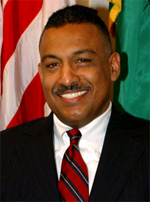
Larry R. Felix, the 24th Director of the Bureau of Engraving and Printing
Felix, who was born in Port of Spain, the capital of Trinidad and Tobago, was raised in New York City where he attended New York City College of Technology (City Tech) and City College of New York. He has been working for the BEP since 1993 and became the bureau’s director in 2006.
Felix was 24th director of the BEP and was the first African-American to be the Director.
Under Felix, the BEP introduced the next generation of currency designs in conjunction with the Federal Reserve and the U.S. Secret Service to make it more difficult to counterfeit U.S. currency including the new $100 Federal Reserve Note that has been recognized as the most difficult note to counterfeit. As part of the upgrade in production capabilities, Felix lead the BEP into a transition that made the bureau more technologically advanced and made their production more efficient.
Recent accomplishments include working with groups representing the visually impaired to make currency more accessible as part of a program called Meaningful Access. As part of that effort, the Meaningful Access program produced Eyenote for iOS and IDEAL Currency Identifier for Android to allow smartphone users to identify currency with their phone’s built in camera. They also are making iBill available for free to qualified visually impaired people. IBill is a pocket device that can be used to read U.S. currency and audibly identify its denomination that does not require a smartphone.
More recently, the BEP began to print one-dollar Federal Reserve Notes in sheets of 50 notes. During the production cycle, one-third of the notes being produced are $1 notes where more than 80-percent of the notes produced are used to replace worn currency. To meet the demand and lower the production cycle, this 38-percent per sheet increase in production will reduced the number of printing cycles required better meeting the demands of the BEP’s primary customer, the Federal Reserve.
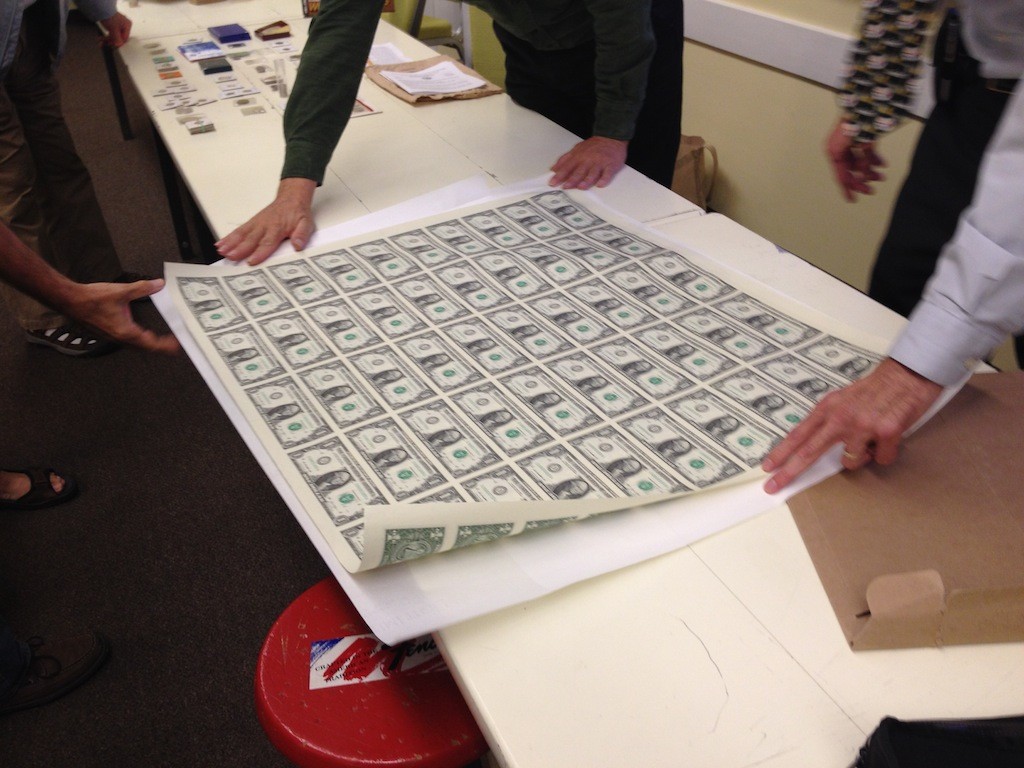
A view of the 50 Note Sheet of $1 Federal Reserve Notes.

BEP Deputy Director Len Olijar speaks to the Montgomery County Coin Club during their September 2014 meeting.
Unlike the U.S. Mint, the Director of the BEP is a career employee of the United States Government. BEP directors are members of the Senior Executive Service (SES), a program established as part of the Civil Service Reform Act of 1978 to “ensure that the executive management of the Government of the United States is responsive to the needs, policies, and goals of the Nation and otherwise is of the highest quality.”
Although most SES members are career employees, the government can hire qualified executives from outside of the government. These special appointments to the SES are renewable terms from three-to-five years where the appointee can only serve two appointments in the same position.
Since SES members are employees of the United States government, they are not subject to the Senatorial confirmation process political appointees must undergo. However, it is the job of the Secretary of the Treasury Jack Lew to appoint a new permanent director. It is likely Lew will make the appointment based on the recommendation of Treasurer Rosie Rios. Both Lew and Rios are political appointees whom have been confirmed by the Senate.
As an aside, the U.S. Mint has not had a director since the resignation of Edmund Moy in January 2011. Since the Director of the U.S. Mint is a politically appointed position, the U.S. Mint is legally managed by Treasurer Rosie Rios who has assigned Deputy Directory Richard A. Peterson to manage the day-to-day operations. Peterson, who is probably doing a better job than an appointee, is a career government employee and a member of the SES.
Image of Larry Felix courtesy of the Bureau of Engraving and Printing.
 Usually, I open the month with a report on the coin-related legislation from last month. In August, congress went on their summer vacation and did not work on any legislation. There are many who think that given the way congress has done little to nothing over the last few years, this may have been a good thing. When congress returns after Labor Day, there is work on their schedules. While I expect the same level of non-work as before their vacation, there are the issues that have a high probability of being worked on.
Usually, I open the month with a report on the coin-related legislation from last month. In August, congress went on their summer vacation and did not work on any legislation. There are many who think that given the way congress has done little to nothing over the last few years, this may have been a good thing. When congress returns after Labor Day, there is work on their schedules. While I expect the same level of non-work as before their vacation, there are the issues that have a high probability of being worked on. The term Dog Days goes back to ancient Roman times when calendars were measured by the stars. While trying to measure time, the hottest part of the summer would coincide with the brightest star, Sirius, being dominant in the sky. Sirius is part of the constellation Canis Major (big dog).
The term Dog Days goes back to ancient Roman times when calendars were measured by the stars. While trying to measure time, the hottest part of the summer would coincide with the brightest star, Sirius, being dominant in the sky. Sirius is part of the constellation Canis Major (big dog).


 March saw the sales tax come under attack as states are looking to the federal government to lift the restrictions on collecting taxes on interstate sales. The senate re-introduced the
March saw the sales tax come under attack as states are looking to the federal government to lift the restrictions on collecting taxes on interstate sales. The senate re-introduced the 



